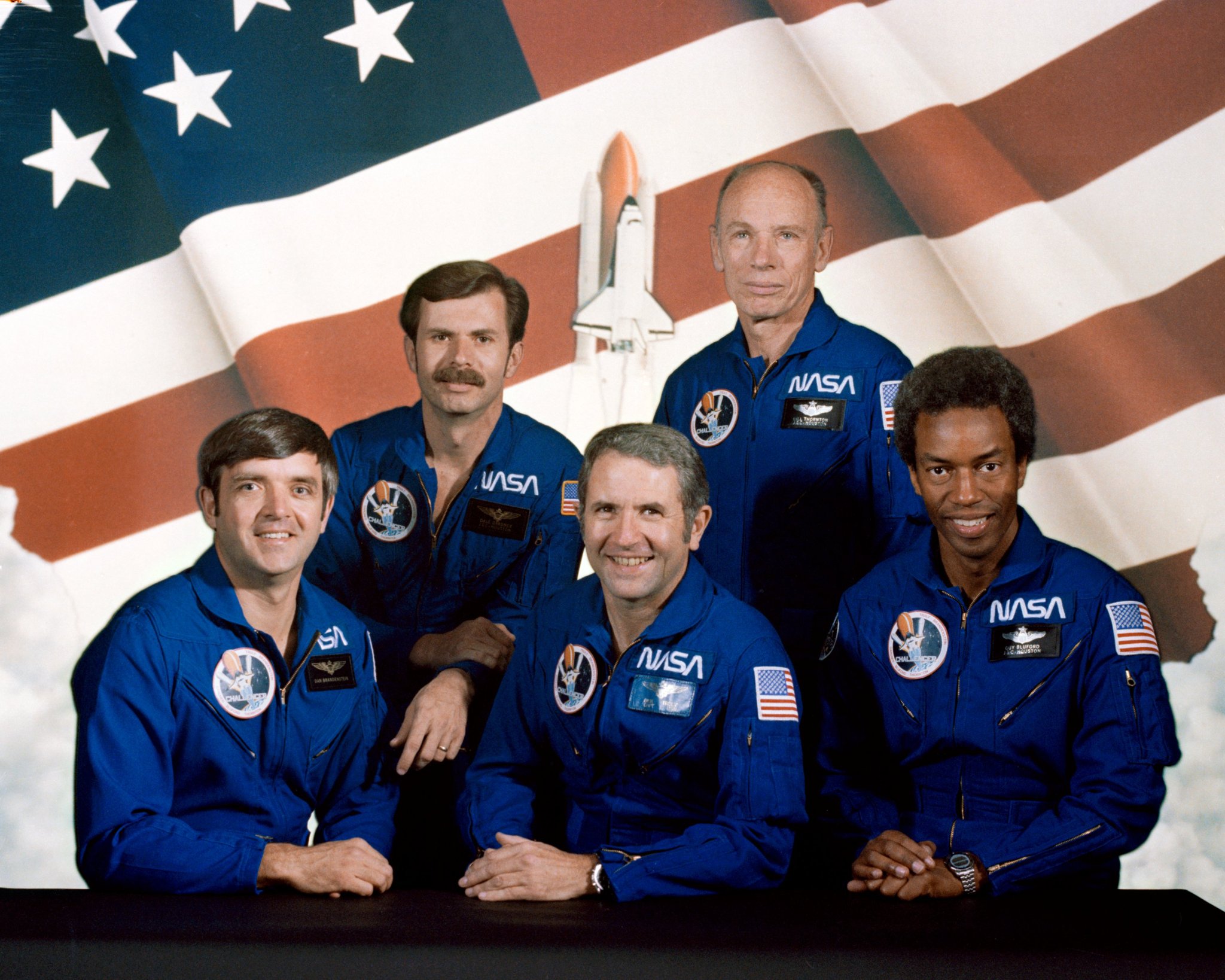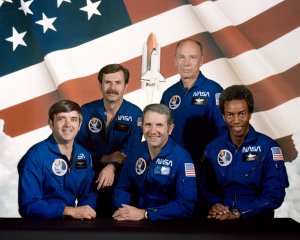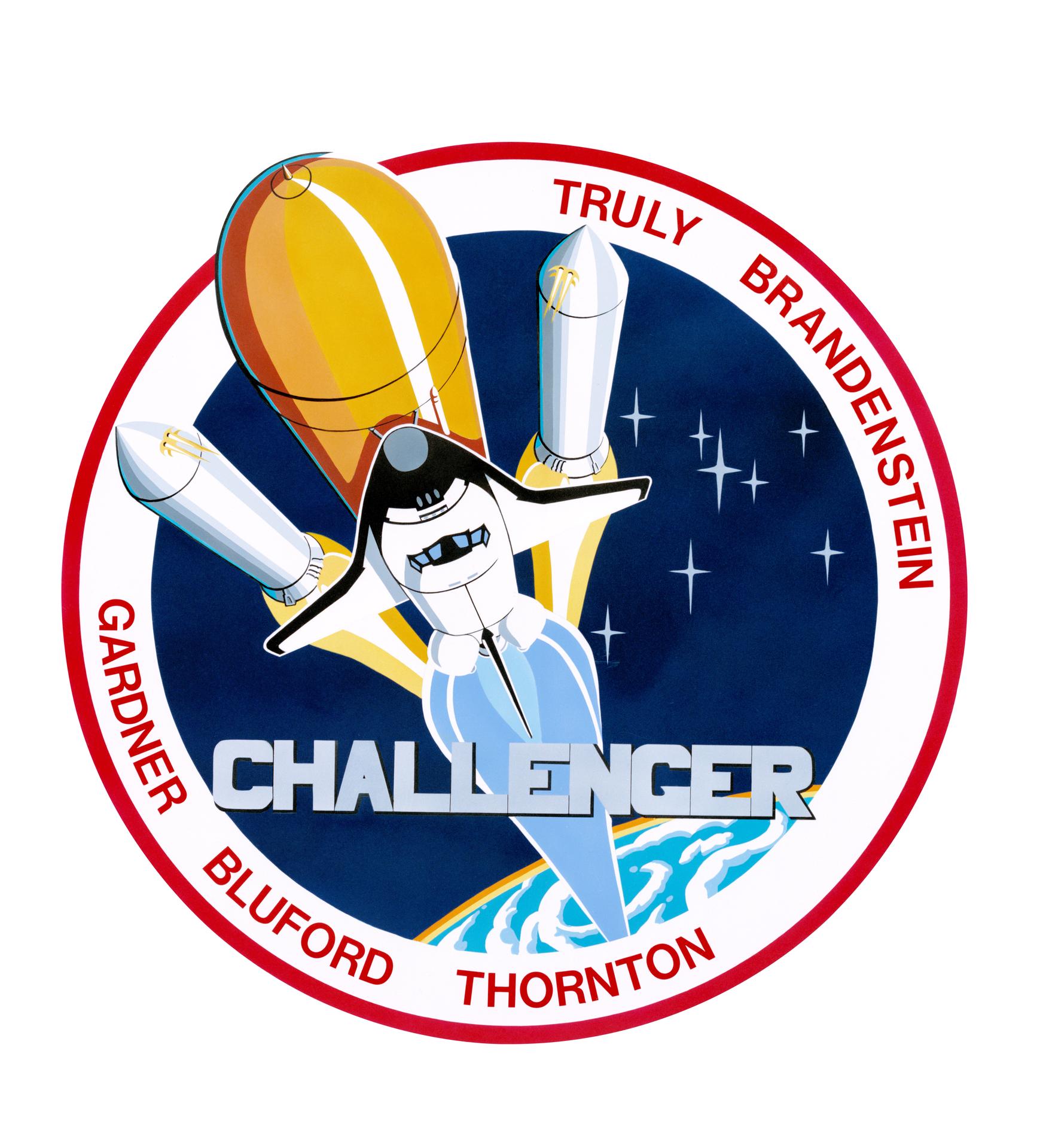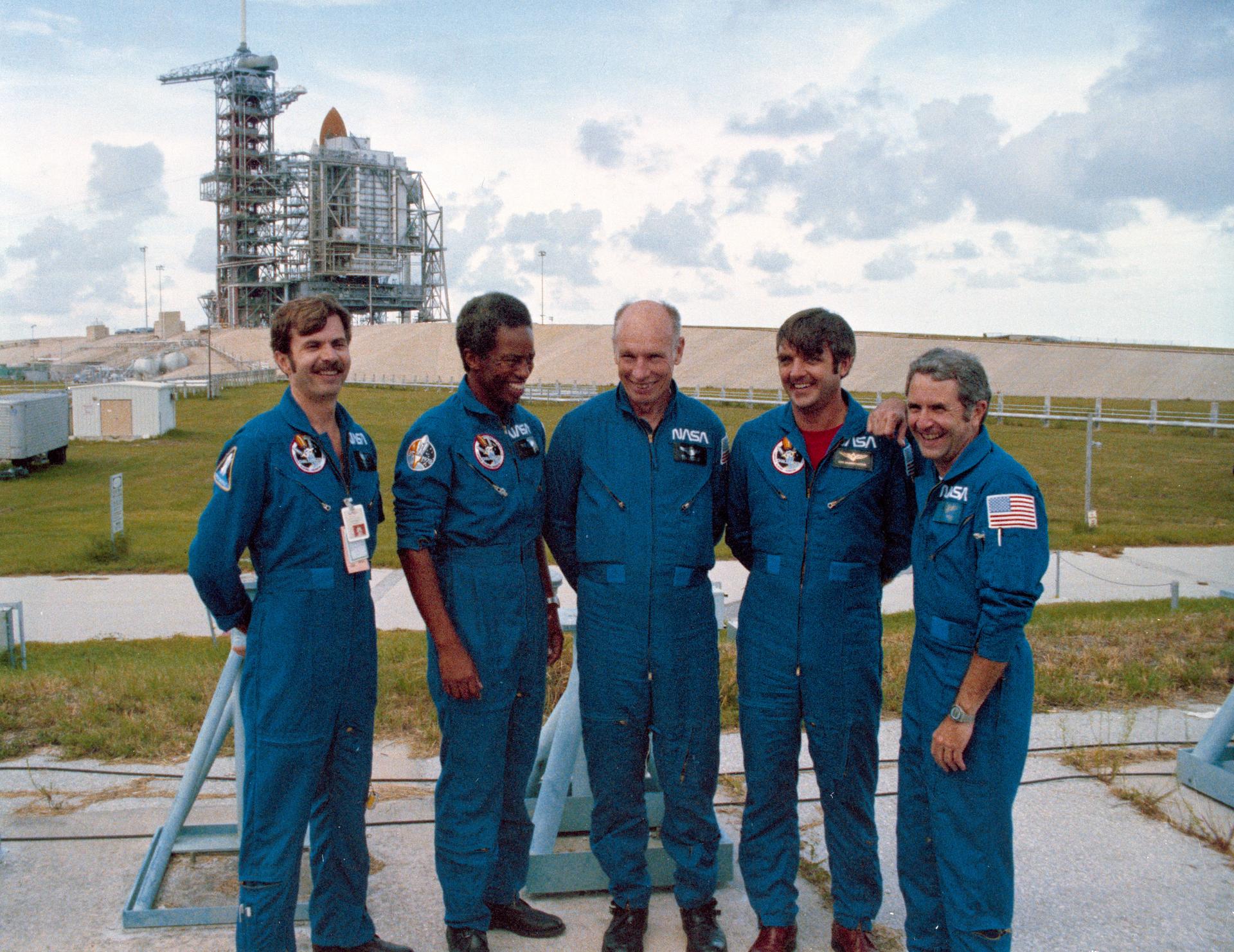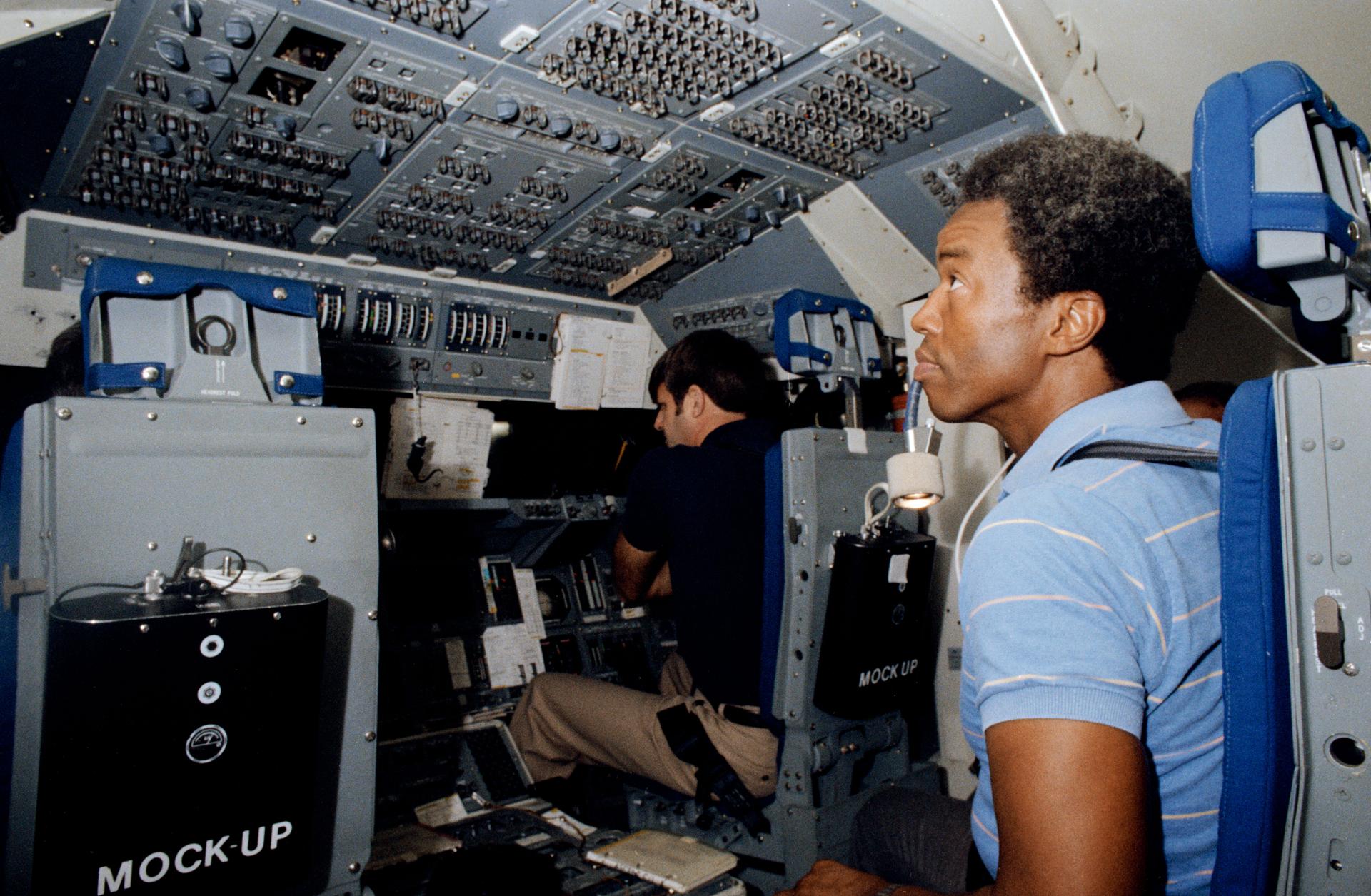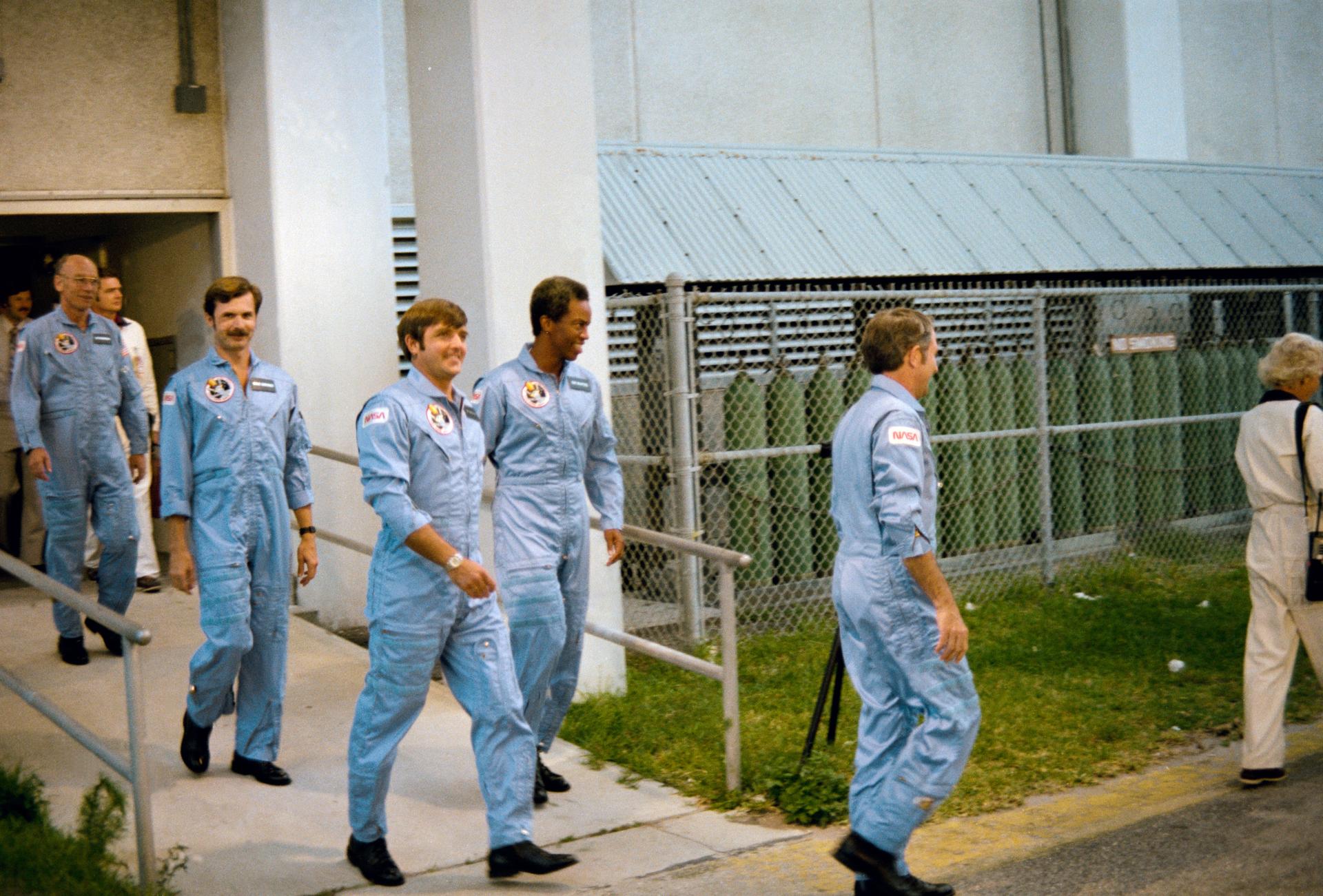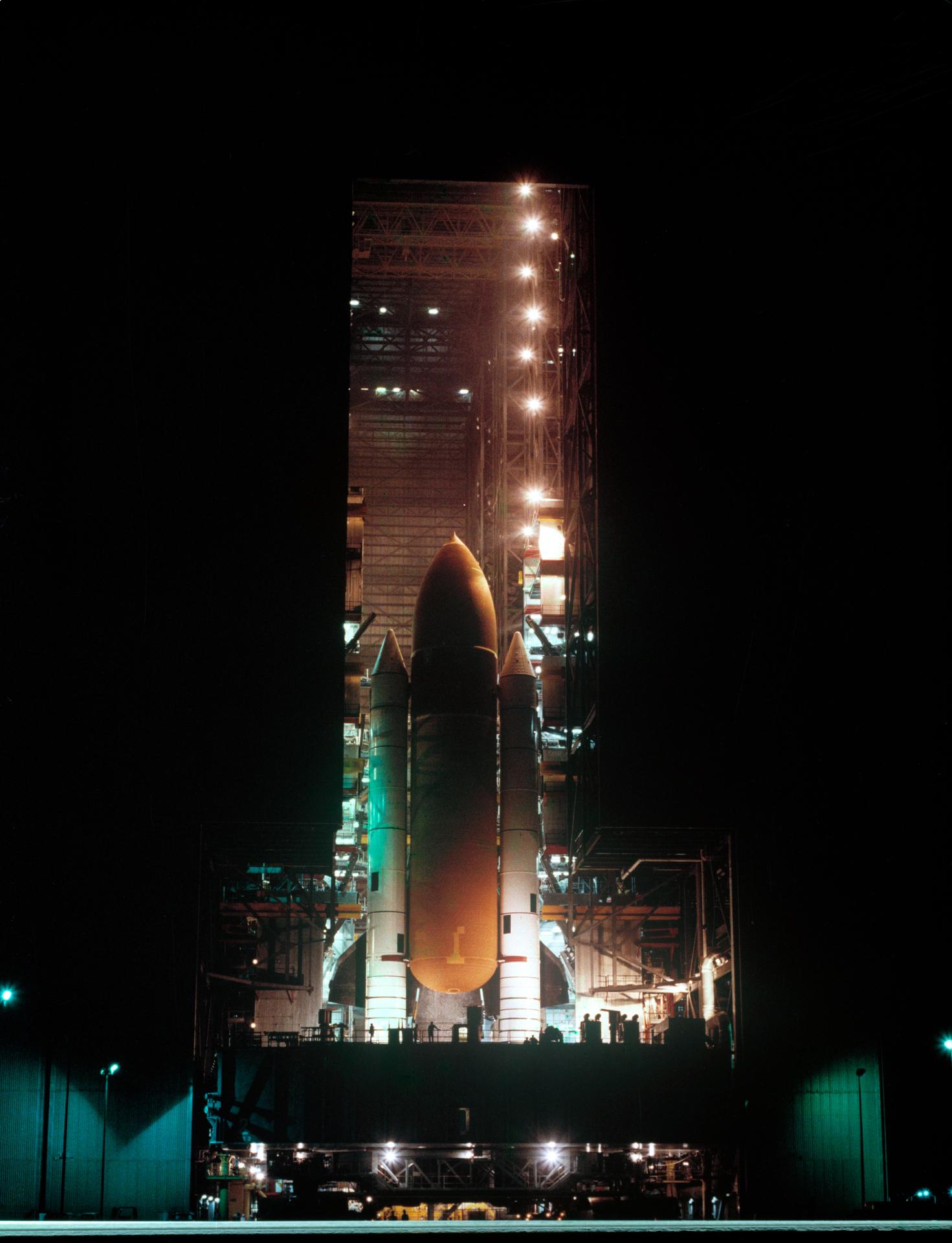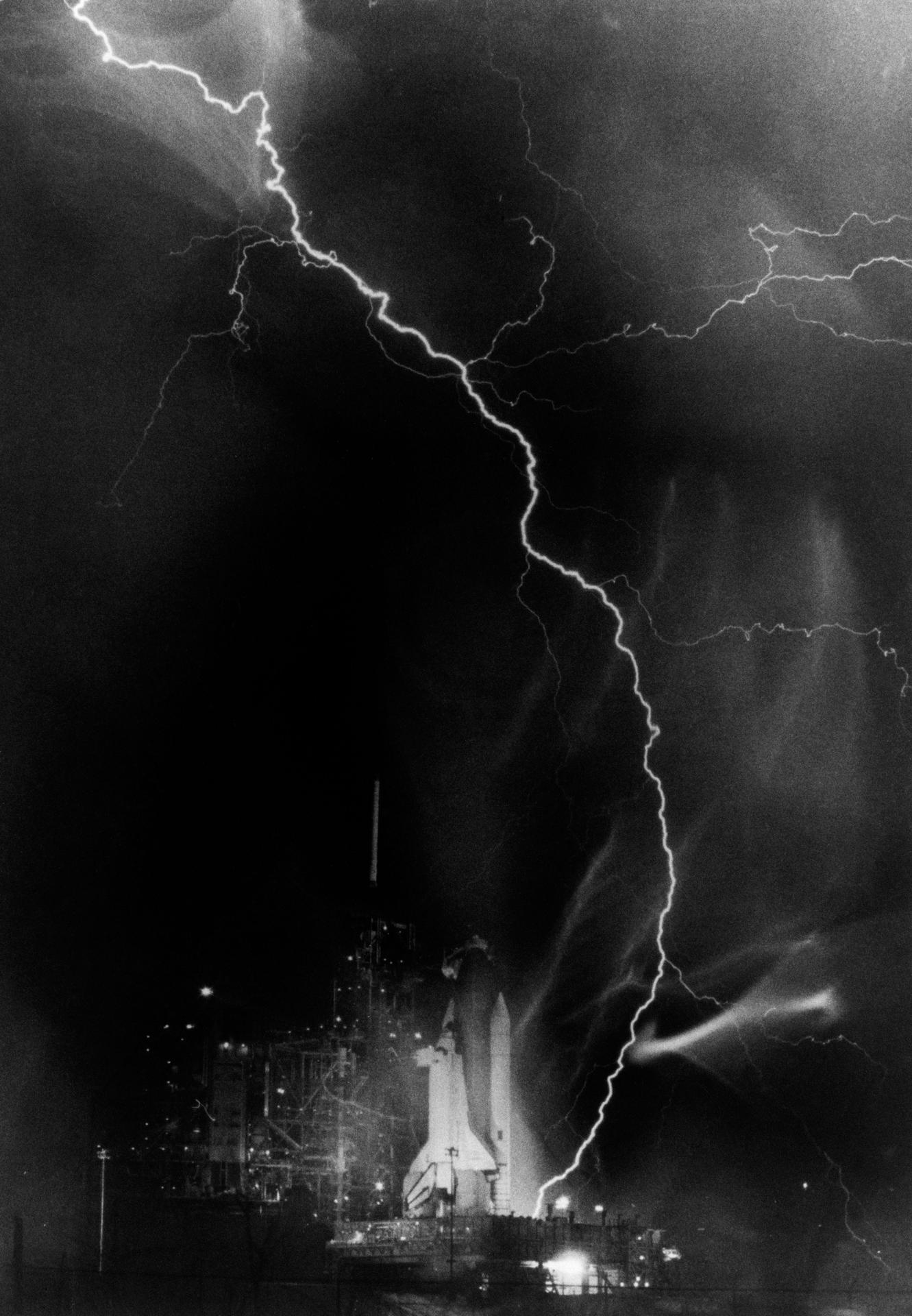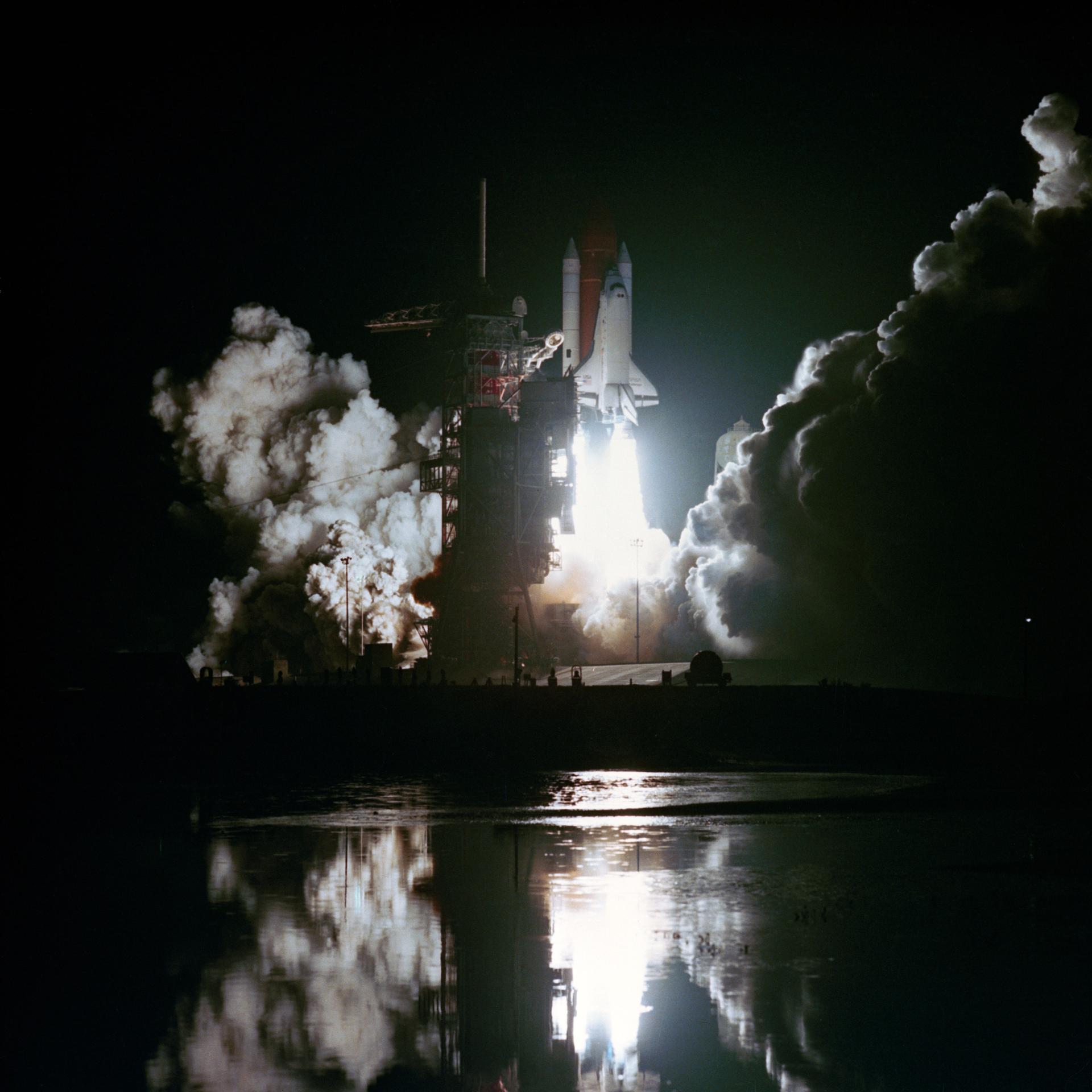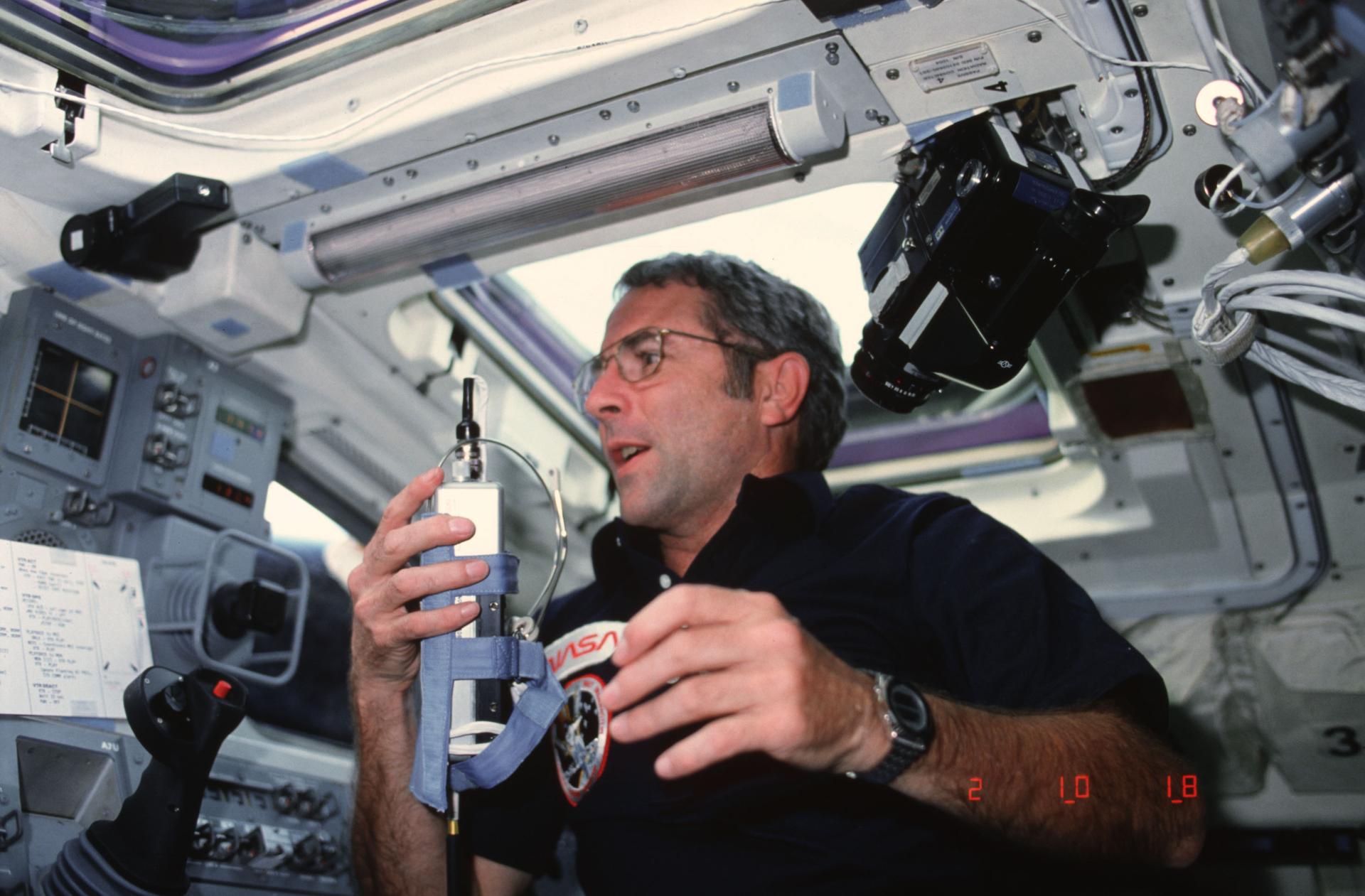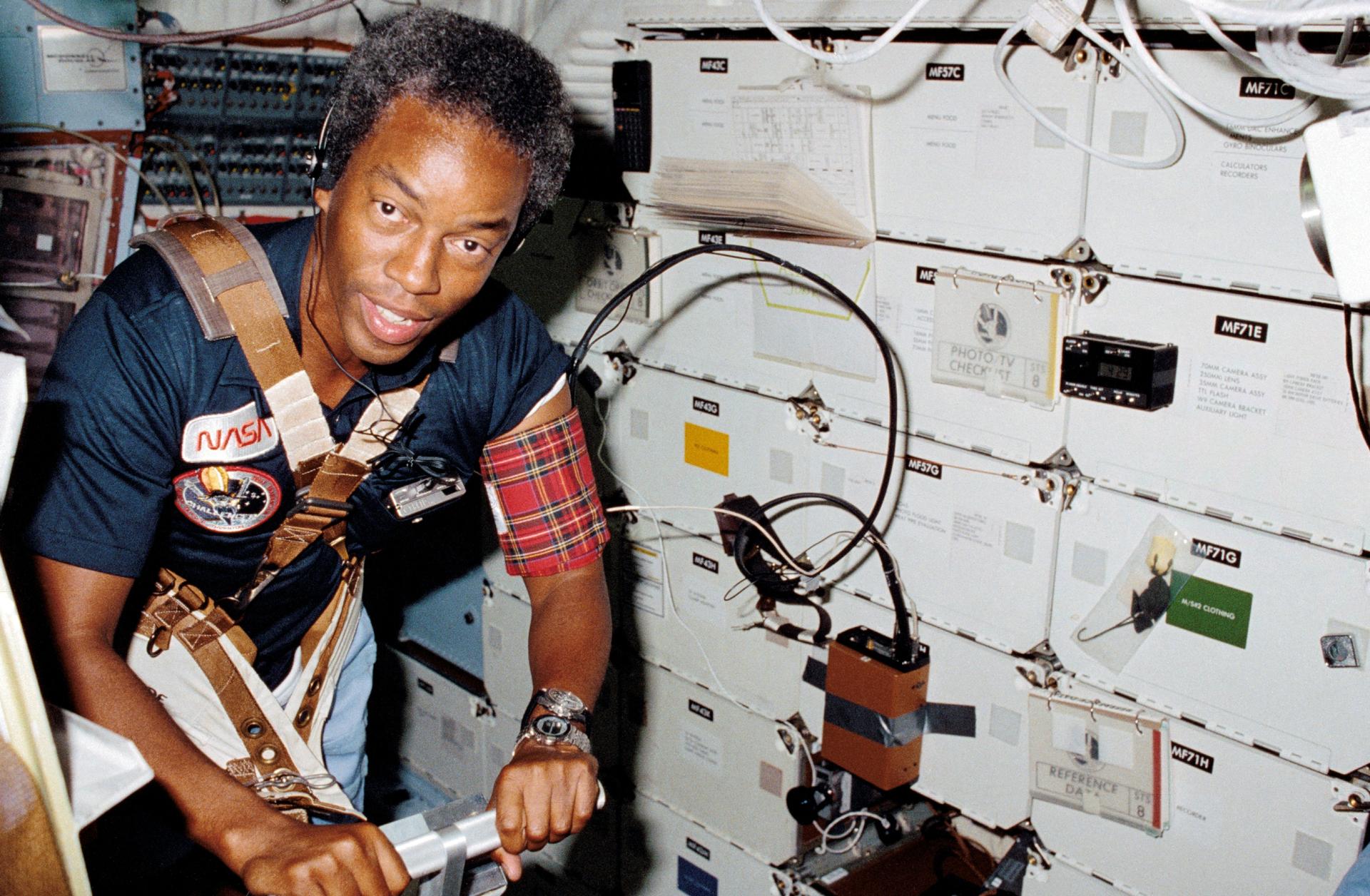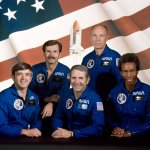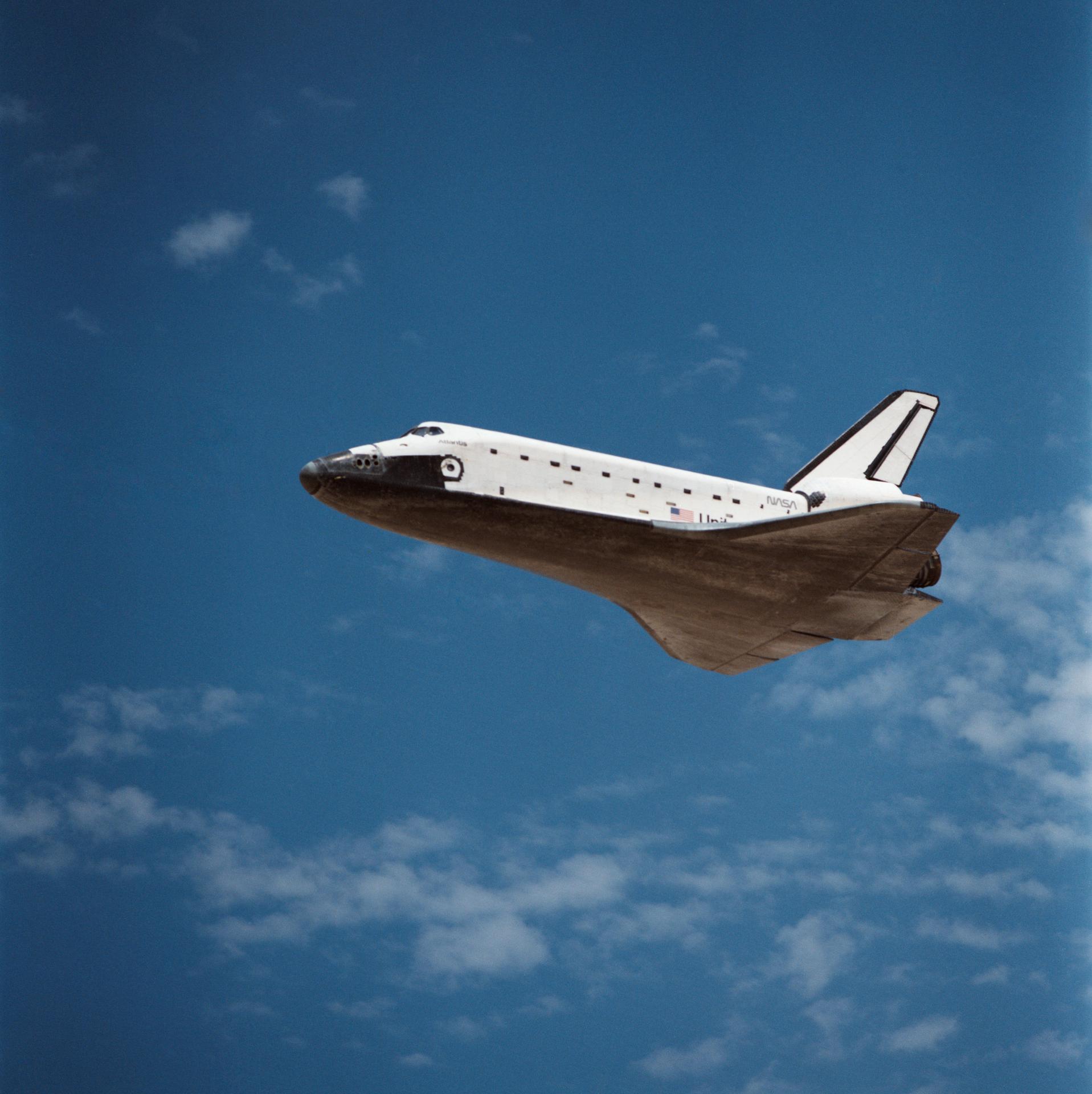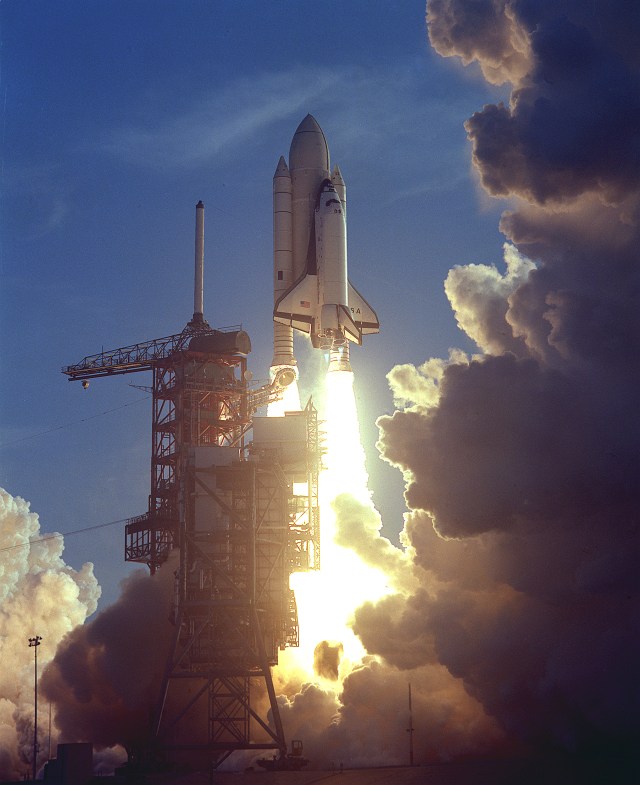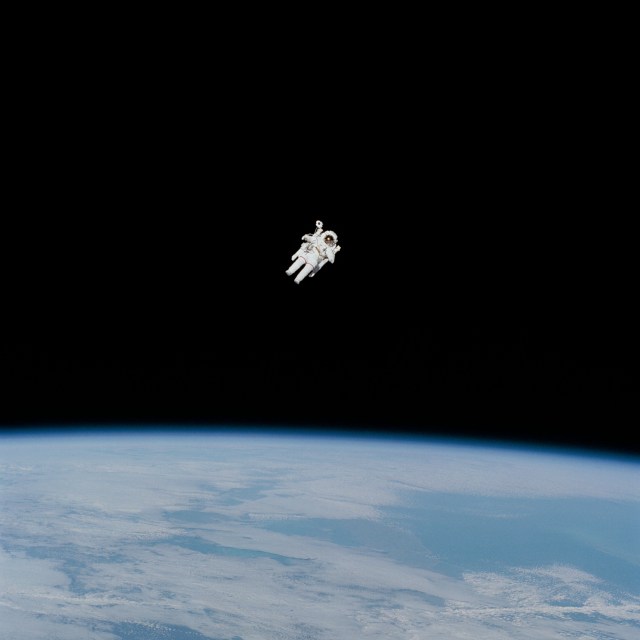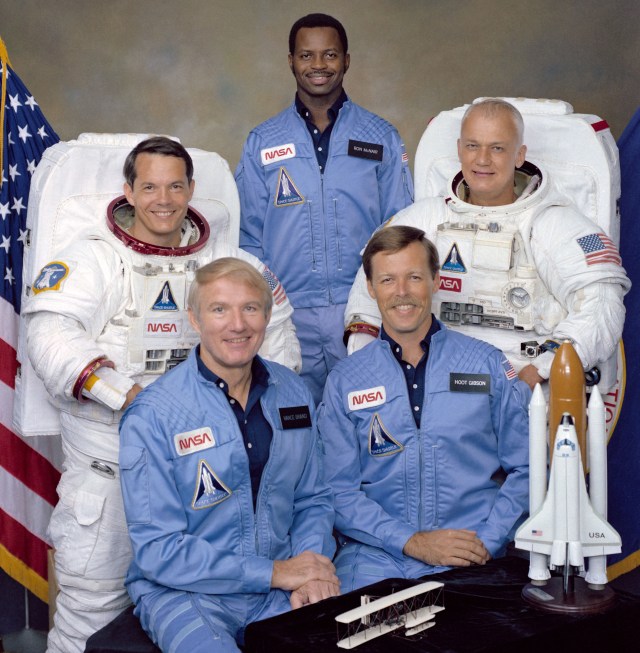
STS-8
STS-8 carried Guion Bluford who became the first African American to fly in space. INSAT-1B, a multipurpose satellite for India which was attached to the Payload Assist Module-D (PAM-D) motor, was deployed.
Orbiter
mission duration
Launch
Landing
Mission Facts
Mission: Multipurpose Satellite/First Night Launch and Landing
Space Shuttle: Challenger
Launch Pad: 39A
Launch Weight: 242,742 pounds
Launched: Aug. 30, 1983 at 2:32:00 a.m. EDT
Landing Site: Edwards Air Force Base, Calif.
Landing: Sept. 5, 1983 at 12:40:43 a.m. PDT
Landing Weight: 203,945 pounds
Runway: 22
Rollout Distance: 9,371 feet
Rollout Time: 50 seconds
Revolution: 98
Mission Duration: 6 days, 1 hour, 8 minutes and 43 seconds
Returned to KSC: Sept. 9, 1983
Orbit Altitude: 191 nautical miles
Orbit Inclination: 28.5 degrees
Miles Traveled: 2.5 million
Crew
Richard H. Truly, Commander
Daniel C. Brandenstein, Pilot
Guion S. Bluford Jr., Mission Specialist
Dale A. Gardner, Mission Specialist
William E. Thornton, Mission Specialist
Mission Highlights
Bluford became the first African American to fly in space. INSAT-1B, a multipurpose satellite for India which was attached to the Payload Assist Module-D (PAM-D) motor, was deployed. The nose of orbiter was held away from the sun for 14 hours to test the flight deck area in extreme cold. For the Development Flight Instrumentation Pallet (DFI PLT), the crew filmed performance of an experimental heat pipe mounted in the cargo bay; also, the orbiter dropped to 139 miles altitude to perform tests on thin atomic oxygen to identify the cause of glow that surrounds parts of the orbiter at night. The remote manipulator system was tested to evaluate joint reactions to higher loads. The following biofeedback experiment was conducted: six rats were flown in the Animal Enclosure Module to observe animal reactions in space. Other payloads on this mission: Continuous Flow Electrophoresis System (CFES); Shuttle Student Involvement Program (SSlP) experiment; Incubator-Cell Attachment Test (l CAT); Investigation of STS Atmospheric Luminosities (ISAL); Radiation Monitoring Equipment (RME); and five Get Away Special experiment packages including eight cans of postal covers. Testing was conducted between the Tracking and Data Relay Satellite-I (TDRS-1) and the orbiter using a Ku-band antenna, and investigations continued on the Space Adaptation Syndrome.
STS 8: The First Shuttle Night Launch & Landing
With its first two flights successfully completed, Space Shuttle Challenger was ready to head back into space. As with its…
Read the Story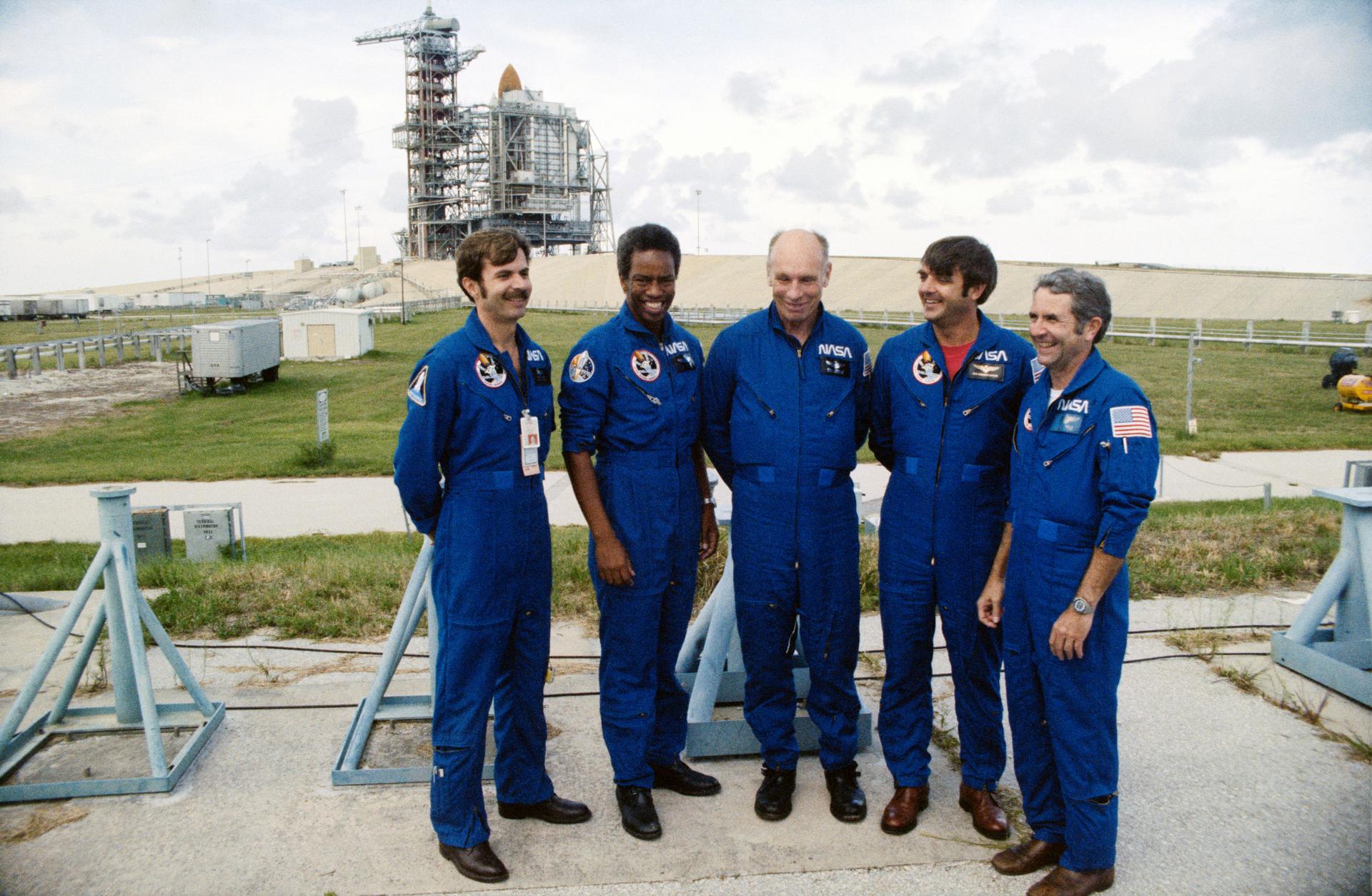
STS-8
Shuttle News
Retired Space Shuttle Locations
Shuttle Atlantis – Kennedy Space Center Visitor Complex Shuttle Discovery – Steven F. Udvar-Hazy Center Shuttle Endeavour – California Science…
Read the Story



























